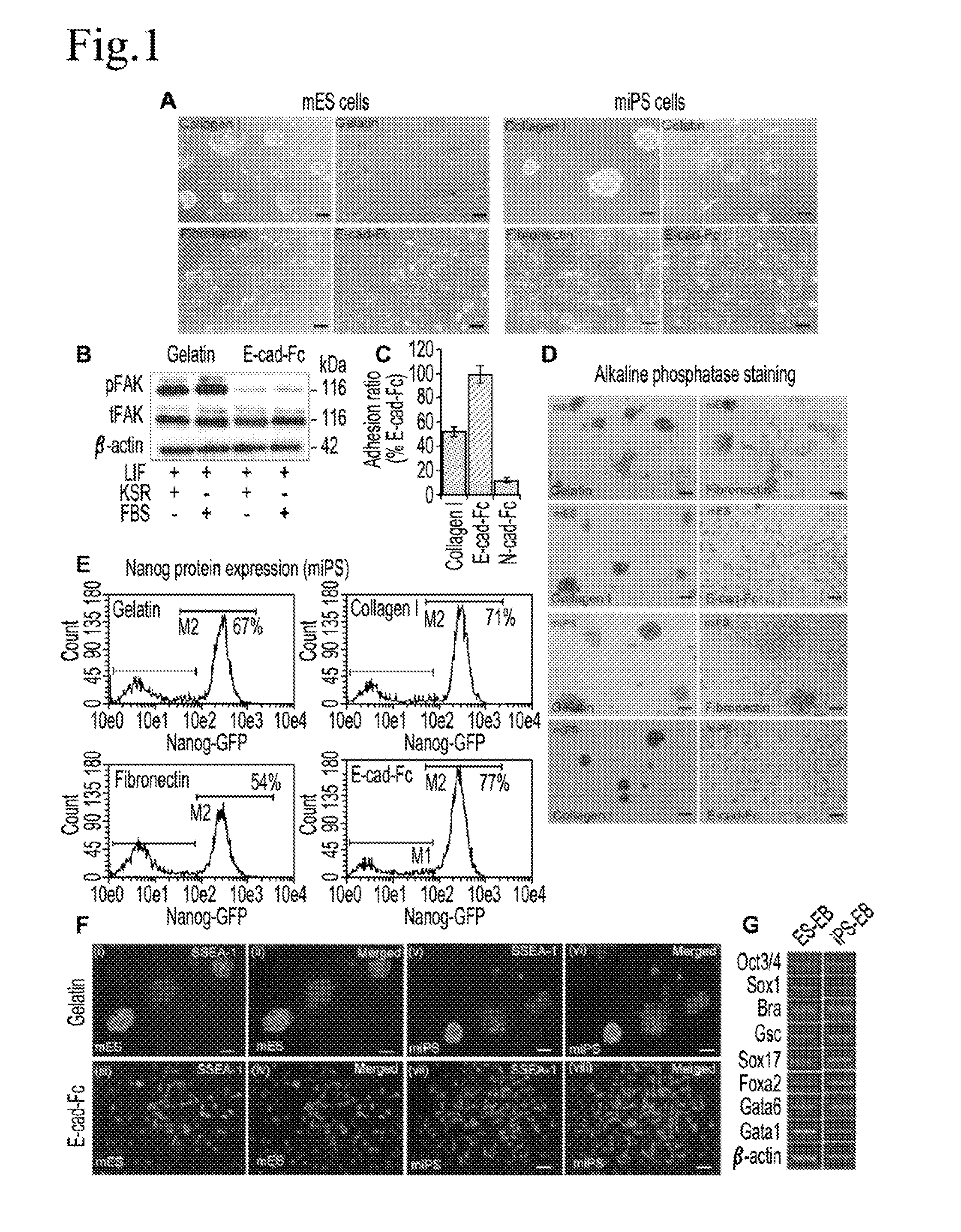Cell culture substrate, and cell culturing method using the substrate and method for inducing differentiation of pluripotent stem cells using the substrate
a cell culture substrate and cell culturing technology, applied in the field of cell culture substrate, cell culturing method using the substrate and the method of inducing differentiation of pluripotent stem cells using the substrate, can solve the problems of inconvenient culturing methods employed for these classical es/eg cells, stem cells present in parenchymal organs such as the brain, heart or liver are technically difficult to obtain from living tissues, and have low proliferation potency. , to
- Summary
- Abstract
- Description
- Claims
- Application Information
AI Technical Summary
Benefits of technology
Problems solved by technology
Method used
Image
Examples
examples
[0146]The present invention will be described below in more detail with reference to Examples, but the present invention is not limited to these Examples in any way.
[0147]Experiments carried out in the Examples of the present invention are as follows.
[0148]A feeder-dependent mES cell line (ST1) and Nanog-GFP expressing miPS cell line (APS0001 iPS-MEF-Ng-20D-17) were routinely cultured on murine embryonic fibroblast (MEF) cells in 35 mm culture dishes coated with gelatin in a humidified atmosphere of 5% CO2 at 37° C. The ST1 cells were maintained in Dulbecco's Modified Eagle's Medium (DMEM, Sigma-Aldrich), supplemented with 20% (v / v) fetal bovine serum (FBS), 1 mM sodium pyruvate (nacalai tesque), 1 mM L-glutamine (Millipore), 1% nonessential amino acids (NEAAs; Gibco, Invitrogen), 0.1 mM 2-mercaptoethanol (Sigma Chemical) and 1000 units / ml LIF. The miPS cells were cultured in a medium supplemented with DMEM (high glucose without pyruvate; Sigma), 15% FBS, 0.1 mM NEAAs, 0.1 mM 2-merc...
PUM
 Login to View More
Login to View More Abstract
Description
Claims
Application Information
 Login to View More
Login to View More - R&D
- Intellectual Property
- Life Sciences
- Materials
- Tech Scout
- Unparalleled Data Quality
- Higher Quality Content
- 60% Fewer Hallucinations
Browse by: Latest US Patents, China's latest patents, Technical Efficacy Thesaurus, Application Domain, Technology Topic, Popular Technical Reports.
© 2025 PatSnap. All rights reserved.Legal|Privacy policy|Modern Slavery Act Transparency Statement|Sitemap|About US| Contact US: help@patsnap.com



